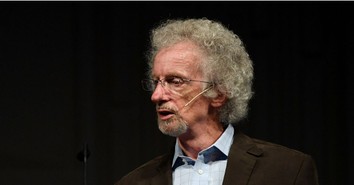What to Do When You Disagree on Doctrine

Putting Our Doctrines through Triage
Albert Mohler wrote a helpful article that many Christians refer to when it comes to our disagreements over doctrine.6 In it, he uses the illustration of the triage process in the emergency room of a hospital to help us to prioritize the danger levels of doctrinal differences. This illustration really helps us to get a better understanding of what we are dealing with. Everyone who needs emergency medical attention is unhealthy. Have you ever been in an ER? It’s uncomfortable, to say the least. There are suffering faces all around and family members in panic. The room is full of fear, anxiety, sorrow, and desperation. And then there are the germs! It’s not a place that you want to hang around in. And yet not every illness and injury is equal. Medical professionals have to assess the threat level as they prioritize which patients the doctors will see first. So someone who is having a heart attack, or a child who has been hit by a car, is going to get priority over a really bad sinus infection or migraine. The hospital staff is trained to ask specific questions and make pertinent observations to decide which patients need immediate attention and which conditions can endure the wait. These aren’t always easy decisions to make. Some are clearer than others, and everyone is going to be seen by a doctor, but it is a helpful way to persevere through the tasks at hand. Without this method, the chaos of emergency medical problems would be overwhelming.
Likewise, faced with parachurch ministries, information on the Internet, Christian books, celebrity pastors, and podcasts, we may be overwhelmed as we try to discern which doctrines need to be protected and which ones may not need immediate surgery. All theological error is unhealthy, for sure. But the essentials, such as the authority of Scripture, the Trinity, the deity and humanity of Christ, and justification by faith, are what Mohler calls “first-order” doctrines that are necessary for a Christian to believe. Any teachings that contradict first-order doctrines are heretical.
Mohler then distinguishes two more levels of theological triage. “Second-order” doctrines, also called “secondary” doctrines, are those that are so important that they will affect our corporate worship but do not stop us from counting one another as brothers and sisters in Christ. And, as a result, we have different denominations within Christianity. Baptism is a good example of this. Presbyterians and Baptists are not both right on the meaning and mode of baptism. Both strongly believe that their understanding of baptism is closest to God’s Word. And yet, both believe the important matter that all communicant members in God’s household need to be baptized. We also both believe that the act of baptism does not create new life but is rather a sign and a seal of the work of Christ in his death and resurrection. So we agree on the importance of the sacrament, but our differences are important enough to cause us to worship separately. Teaching on church government can also be a second-order doctrine. Mohler also regards the ordination or non-ordination of women as a second-order doctrine.
He then adds a “third-order” category of doctrine for sorting in theological triage. This category is for differences that are real and important, but not ones that would necessarily keep us from worshipping together in the same congregation. He uses the example that Christians can maintain close fellowship while still having differences in belief about the details of Christ’s return—the doctrine of eschatology, as we call it.
This can be a helpful guide, but we are responsible to know Scripture, to look at the historic confessions of the church in opposition to heresy, and to exercise wisdom and discernment as we read. We need to take theology seriously, but we also need to do our triage with humility. We can’t just call someone a heretic because we strongly disagree with her. We need to be careful not to put second-and third-order doctrines in the first-order category. And yet we are to pursue truth and treat all theological error as unhealthy. We may recognize a difference as secondary, but it may still be an important matter that shouldn’t be downplayed. After all, we want to grow in our knowledge of the truth, not to become complacent.
And we should strive to sharpen one another in a friendly manner. This is where denominational boundaries can be helpful. If we are upfront about our theological distinctives, we then have a platform from which to let others know what confessions we align with the most. This way, we aren’t being manipulative in our conversations and with our teaching. With proper boundaries set in place, we can acknowledge where we agree and disagree, all with the common goal of sharpening one another according to the Word of God and the working of his Spirit. But this requires a resolve to take theology seriously, take ourselves less seriously, and desire to grow in a meaningful way. Pretending that we are all on the same page and overlooking important differences can only foster a superficial unity that is not based on Christ’s Word.

Aimee Byrd is a Bible study teacher and author of Housewife Theologian and Theological Fitness. She also speaks at women's retreats, blogs about theology and the Christian life, and cohosts The Mortification of Spin podcast. She is married with three children, lives in Maryland, and is a member of New Hope Orthodox Presbyterian Church.
6. See Albert Mohler, “A Call for Theological Triage and Christian Maturity,” AlbertMohler.com, July 12, 2005, https://www.albertmohler.com/2005/07/12/a -call-for-theological-triage-and-christian-maturity/.
Image courtesy: Pexels.com
Publication date: February 16, 2017
Originally published February 15, 2017.







